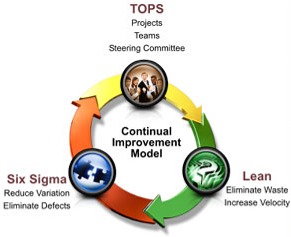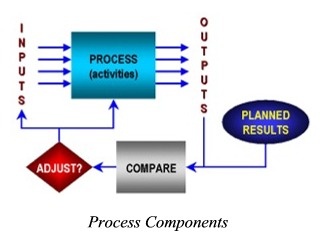 K
Kent State Universityís Stark Campus held a
Showcase of Excellence on May 8, 2009 at the Professional Education and Conference Center in North Canton, Ohio. The featured speaker was John Novak, president of KAVON International, Inc., a Certified Lean Six Sigma Master Black Belt and part of the adjunct faculty at Kent State University.
The Showcase was open to businesses in the area and included representatives from a number of firms, including:
- OGS Industries
- Coastal Pet Products
- Detroit Diesel
- Milpak
- Ohio Gasket and Shim
- Kent State University
Johnís topic was "Lean Six Sigma Overview", during which he described how Lean and Six Sigma methodologies can be used to form the core of a comprehensive Continual Improvement Model.

John addressed the following areas in his talk:
- Commitment
- The Approach
- Processes
- Team Oriented Problem Solving (TOPS)
- What is Lean?
- Why Six Sigma?
- Your Involvement
Commitment
On the topic of commitment, John emphasized that EVERYONE in the organization has to be committed to the process in order to make it work. He indicated that the Leadership Group of the organization needed to provide the initial commitment but also needed to understand what they were committing to before buying in to the approach.
The Approach
John articulated the components of the Continual Improvement Model, TOPS, Lean and Six Sigma. He described the role that each played and how they complemented each other.
Processes
John presented the concept of a process and positioned it as a core description of all activities that that are performed within an organization. Within the process model he identified the following components:

- Inputs
- Activities
- Outputs
- Measures of Effectiveness
John emphasized that the process is the focus of any continual improvement efforts. You are either trying to fix or improve processes that have an impact on the organizationís ability to achieve its strategic objective and satisfy its customers.
Team Oriented Problem Solving (TOPS)
TOPS defines the steering committee, which consists of top management individuals. This group approves and selects projects that contribute to the attainment of the organizationís strategic objectives. Once a project is selected, this group builds the team to complete the project.
What Is Lean?
Lean is the component of the model that looks at a process with the objective of eliminating the waste. Waste is defined as anything the customer is unwilling to pay for. This increases the velocity of the process because the wasteful activities have been eliminated.
Why Six Sigma?
Six looks at the variation in the process and attempts to identify and reduce it, thus reducing defects. John emphasized that Lean without Six Sigma results in processes that produce defects faster.
Employee Involvement
Finally, John addressed the issue of employee involvement. He said it was important that all employees participate in the continual improvement process as well as having an understanding of the process and its importance to them and the organization. John listed the following activities where employees may be asked to participate:
- Provide ideas for potential projects
- Serve as a project champion
- Serve as a project leader
- Be a member of a team
- Provide subject matter knowledge to the team
- Provide support for the whole Lean Six Sigma continual improvement process
- Encourage participation by direct reports
- Promote Lean Six Sigma continual improvement within your area of responsibility.
The session concluded with a period of questions and answers.
The Kent State University Stark Office of Corporate and Community Services is the first place people and organizations in North Canton and the surrounding area think of for continuing their professional education, job training, and personal development. Kent State provides customized corporate training, open enrollment workforce development programs, professional certification and continuing education units, and consulting services for both organizations and individuals.
